Jacob Lawrence (September 7, 1917 – June 9, 2000) was an American painter known for his portrayal of African-American life and is among the best-known 20th-century African-American painters. Lawrence referred to his style as “dynamic cubism”, though by his own account the primary influence was not so much French art as the shapes and colors of Harlem. He brought the African-American experience to life using blacks and browns juxtaposed with vivid colors. He is widely known for his modernist illustrations of everyday life as well as epic narratives of African American history and historical figures. [Wikipedia]
Lawrence is known primarily for his series of panels on the lives of important African Americans in history and scenes of African American life. His series of paintings include: The Life of Toussaint L’Ouverture, 1937, (forty one panels), The Life of Frederick Douglass, 1938, (forty panels), The Life of Harriet Tubman, 1939, (thirty one panels), The Migration of the Negro,1940–41, (sixty panels), The Life of John Brown, 1941, (twenty two panels), Harlem, 1942, (thirty panels), War, 1946 47, (fourteen panels), The South, 1947, (ten panels), Hospital, 1949-50, (eleven panels), Struggle…From the History of the American People, 1953–55, (thirty panels completed, sixty projected).

This is the fourth post in a series of Charlotte Mason picture study resources featuring black artists. I chose to study this artist after discovering that his was the first artwork by an African American artist purchased by the Museum of Modern Art (MOMA). That’s a huge deal, and it inspired me to make him known to my kiddos.
Disclosure: As an Amazon Associate, I may earn commissions from qualifying purchases using these links, at no additional cost to you.
Biography resources:
- Picture book – Story Painter: The Life of Jacob Lawrence (This is a beautiful book with full-page images of his work alongside extensive text written for a mature younger audience.)
- Narrative bio – Black Masters of American Art** (see sample below) – My family has really enjoyed this book. It works for the whole family but especially for older children, especially if they’re reading it themselves. [Update: This book is now available for free viewing on Archive.org: Six Black Masters of American Art]
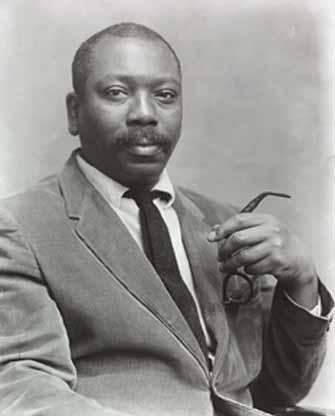
Relevant videos (for parents or older students):*
- MOMA: Life and Career of Jacob Lawrence (This page has a fascinating 10-minute video interview and an hour-long audio interview with Lawrence and his wife Gwendolyn Knight by award-winning historian Henry Louis Gates, Jr.
- PBS: Revisiting the Great Migration through paintings and poetry (relates his work to poetry by African American poets)
- PBS Learning – Picturing America (start at beginning until 2:50)
- Khan Academy – A Harlem Street Scene by Jacob Lawrence, Ambulance Call
- Khan Academy – The Migration Series
Artist print resources:
- I couldn’t find an existing set of Lawrence prints, so here is the set I prepped for my family (choose 6-8): Jacob Lawrence Picture Study Prints – The lesson plans below use these prints.*** The first three selections are from Lawrence’s most famous work – The Migration Series – a sequence of 60 paintings depicting the mass movement of African Americans from the rural South to the urban North between World War I and World War II—a development that had received little previous public attention. The remaining selections represent one each from three other Lawrence series. If you’re pinched for funds, five of the scheduled pics are included in full-page format within the Story Painter book.
- Wikiart Visual Art Encyclopedia (To print your own pictures)
Picture study aids (info about his paintings):
- Info for each picture is linked below in the lesson plans (various sources) – This is intended for the adult to review prior to the lesson. Interesting info can be included in the picture talk.
- Entire collection of all 60 panels from the Migration of the Negro series. So many to choose from. Priceless!
- Jacob Lawrence Curriculum Guide from the SCAD Museum of Art – Interesting exercises and discussion. Parent could read and include a few details in the picture talk.
Museum locator (Find where Lawrence’s work is displayed and plan a trip to visit, if possible):
- Jacob Lawrence – Permanent Collections – Be sure to check the museum before visiting to make sure his work is currently on display)
- Artcyclopedia: Paintings in Museums and Public Art Galleries – Many of the links are broken, but I was able to find the Lawrence pieces after searching for his name on the individual museum websites. There are a lot of smaller, lesser-known museums on this list with his work – be sure to check the museums near you or in cities you plan to visit or drive through. You may luck out!
Bonus Materials:*
- The Great Migration: An American Story – This picture book, like The Block by Langston Hughes and Romare Bearden, combines the poetry of Walter Deans Myers with pieces from Lawrence’s most famous work, The Migration Series. I love it!
- Just for fun – Getting to Know the World’s Greatest Artists: Jacob Lawrence. Fun book that elementary kids can read on their own. It has some silly cartoons along with great color images of his work and a few interesting photos. This book is not scheduled in the lesson plans, but my kids will enjoy it in their free time.
- Harriet and the Promised Land – Tells of Harriet Tubman with Lawrence’s illustrations and rhythmic verse. This one targets early elementary, and I like it.
- Jacob Lawrence in the City – This is a cute little book for preschoolers if you want to extend the family learning to your youngest kiddos.
Lesson Plans (using prints from file linked above in “Artist Print Resources“):
- Week 1: Read bio – Story Painter chapters 1 & 2 or Black Masters p. 99- 105 (stop at “Revolution and the Civil War”)
- Week 2: Read bio – Story Painter chapters 3 & 4 or Black Masters p. 105-113 (stop at “a stark series called War”)
- Week 3: Read bio – Story Painter chapters 5 & 6 or Black Masters p. 113-119
- Week 4: The Migration of the Negro series, Panel 1 (1940-41) or here. “During World War I there was a great migration north by southern African Americans.”
- Week 5: The Migration of the Negro series, Panel 58 (1940-41). “In the North the Negro had better educational facilities.”
- Week 6: The Migration of the Negro series, Panel 10 (1940-41). “They were very poor.”
- Week 7: Compare pictures. If you’ve studied Henry O. Tanner or Horace Pippin, compare Lawrence’s No. 10 to Pippin’s Giving Thanks and Tanner’s The Thankful Poor, otherwise, compare Lawrence pictures from weeks 4-6.
- Week 8: This is Harlem (1942) (Scroll down to This is Harlem)
- Week 9: The War Series: Victory (1947) and here (scroll down to Victory)
- Week 10: Forward Together (1967) – No. 10 from the Harriet and the Promised Land series (scroll to p. 16-17)
- Week 11: Compare pictures from previous three weeks.
- Alternate: The Ant and the Grasshopper (1969). Read the associated Aesop’s fable here or here.
- Alternate: The Ironers (1943)
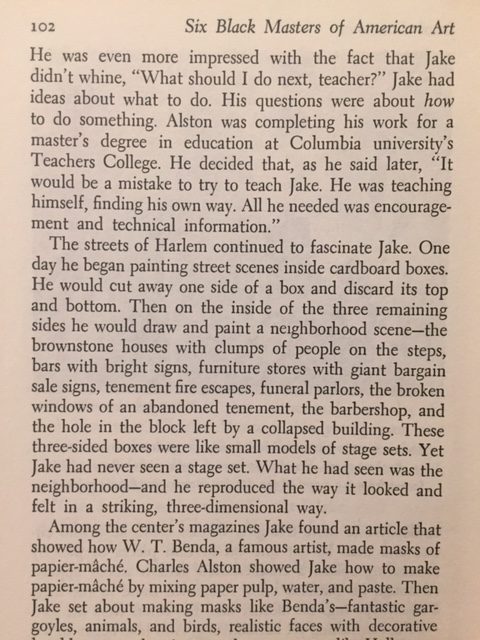
Additional notes:
* I like to immerse myself in the life and art of the artists whose pictures we study. Many of the relevant resources collected here aren’t part of the lesson plans, and I typically don’t even share them with my children. They are for me; they’re part of my self-education as I learn alongside them. I’m just sharing them in case you’d like to do the same, but please feel free to skip as they’re not needed for picture study.
**I didn’t pay nearly as much as the current Amazon price for the Black Masters book, so I hate to see how high it is now. However, I love this book and would gladly pay a slightly higher price. It covers six artists, and it’s written in a mature yet engaging way that delights my family. It’s a living book by a respected black author, I’ll be using it for several of the artist studies, and it’s worth the investment if it’s within reason. If not, the Story Painter book will be PLENTY for this study – I promise!
[Update: This book is now available for free viewing on Archive.org: Six Black Masters of American Art]
*** I print my artist prints at Office Max on “Cardstock Gloss Cover 12pt.” This set was $9.35. These prints are not nearly as nice as the Riverbend or Simply Charlotte Mason picture study prints, but they are nice enough for what my family needs. It is very difficult to find large hi-res images of the work of many of these artists, but I won’t let that stop us from studying them.
If you’ve found other helpful quality information for Lawrence, please post it in the comments!
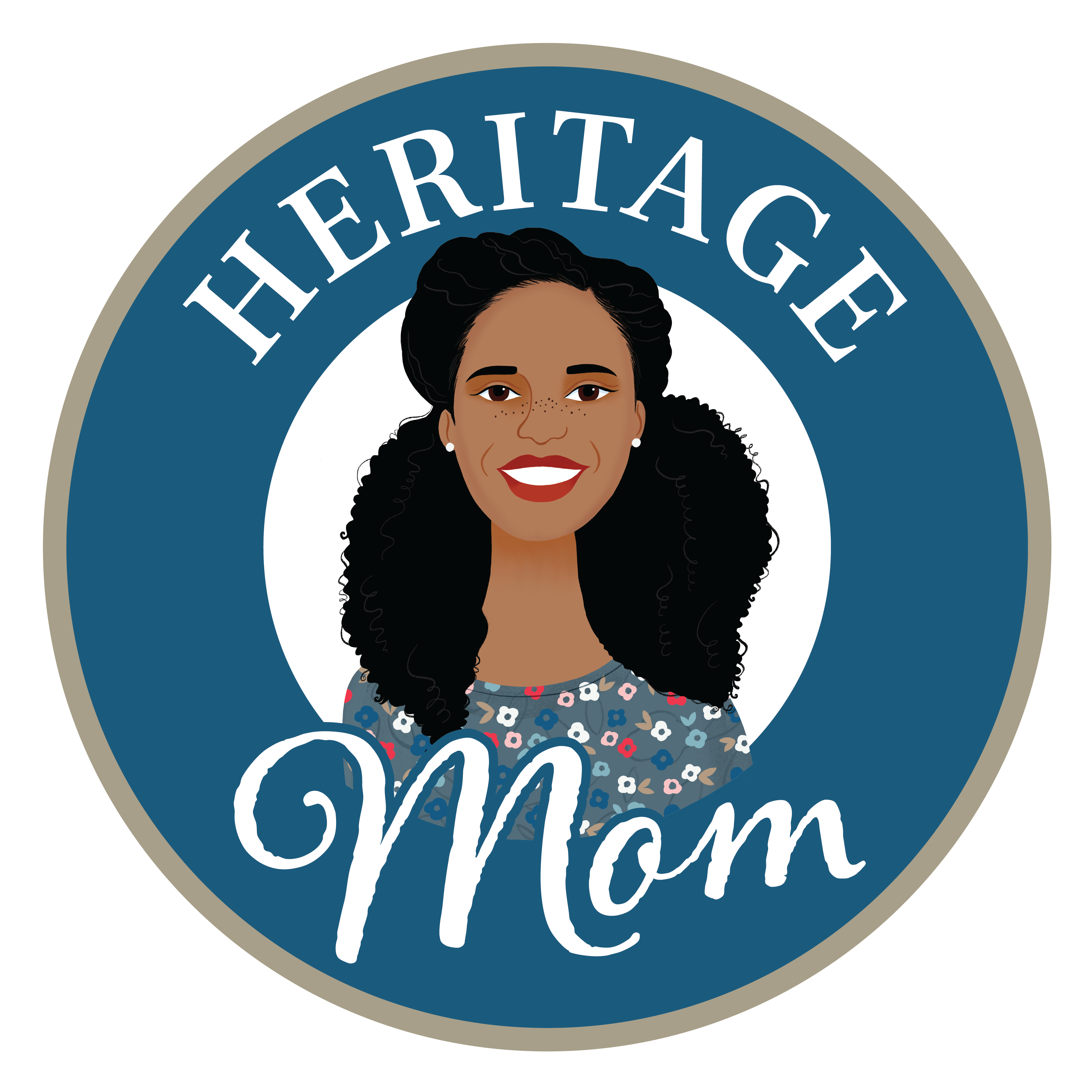
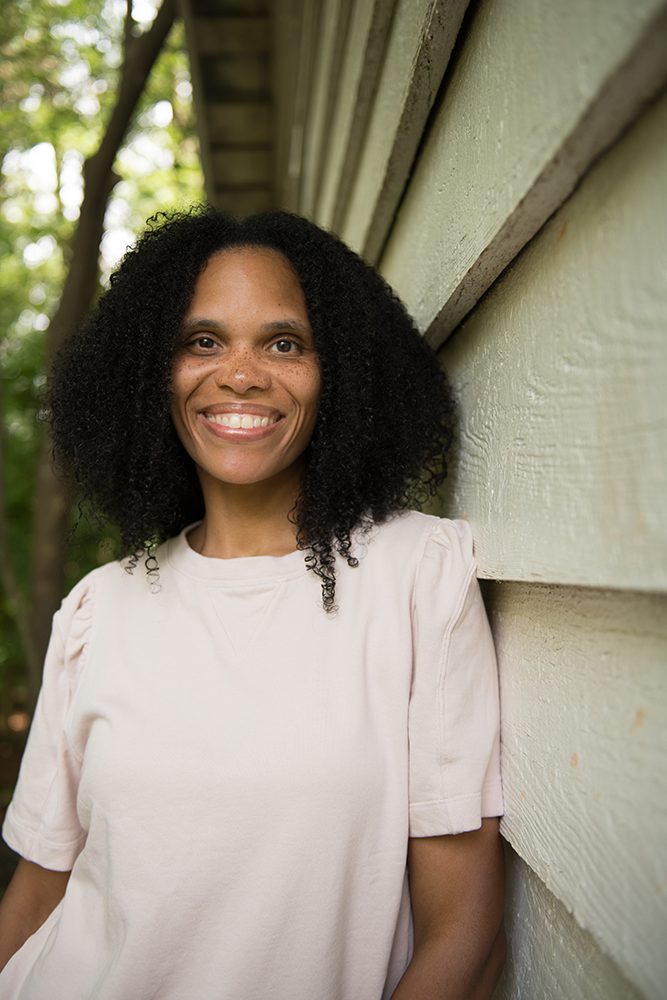
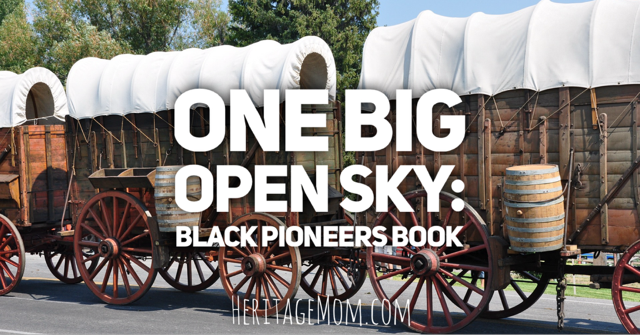
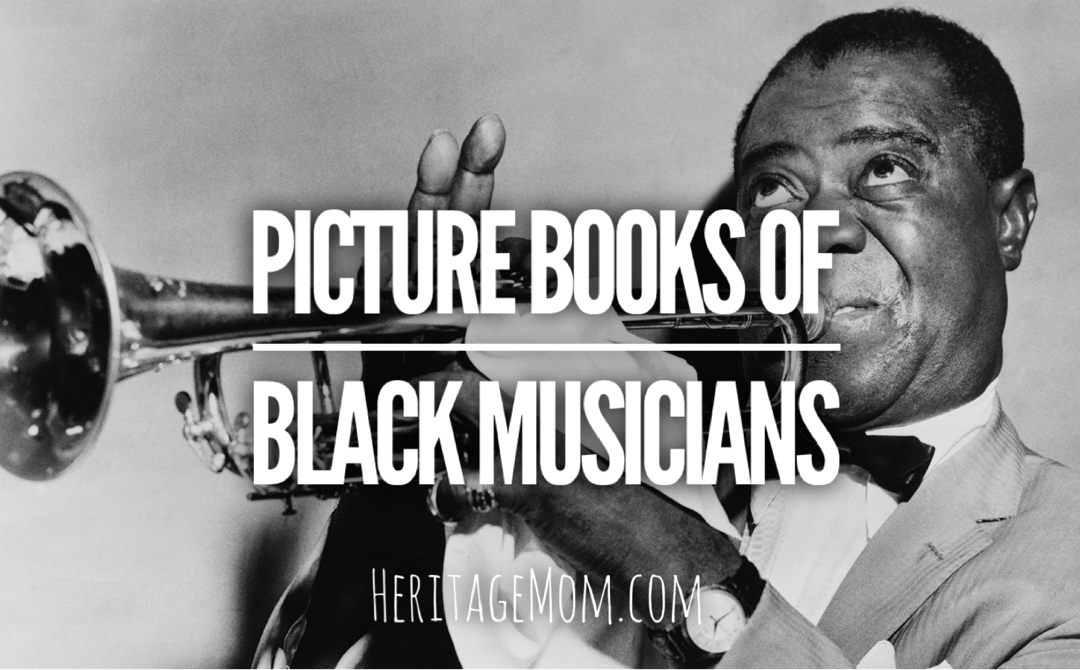
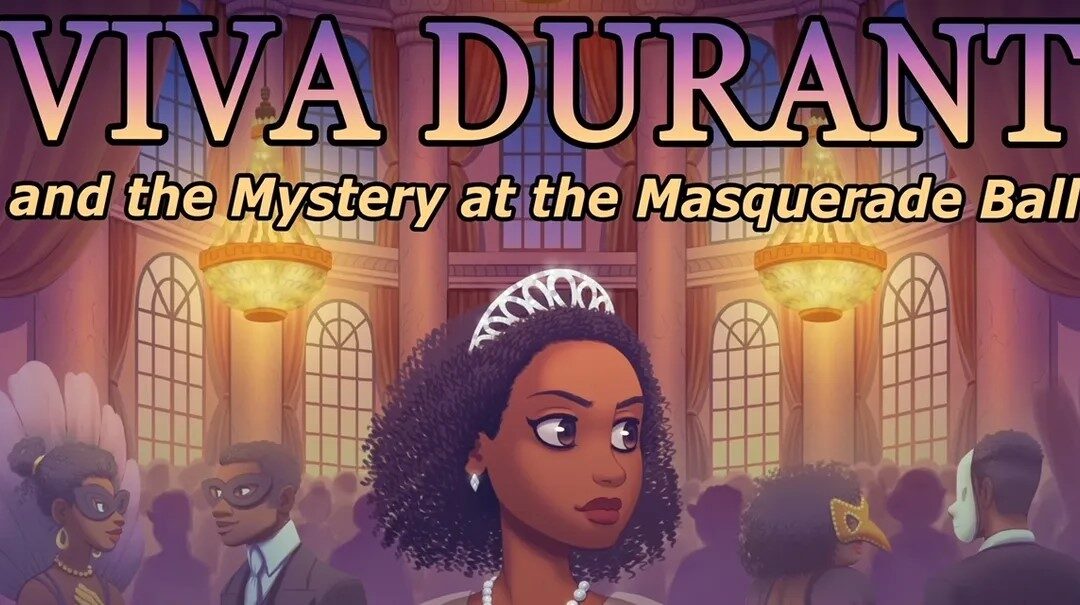
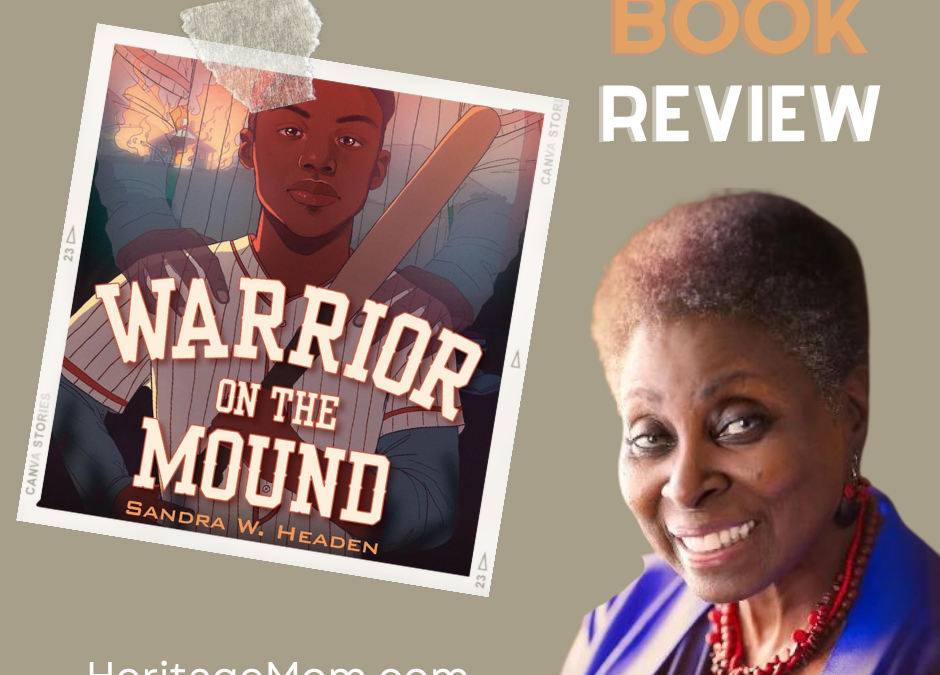
Do you happen to know how the Black Masters book compares to A History of African-American Artists by the same author? (https://www.amazon.com/History-African-American-Artists-1792-Present/dp/0394570162) I was trying to figure out if it was an expansion of Black Masters since it was publish about 20 years later and the description includes the artist in the black masters book but I can’t find any further information.
I can’t swing the price of Black Masters but A History of African-American Artists is in my price range!
I COMPLETELY understand! I own A History of African-American Artists, and I adore the book. It’s quite different from Black Masters but can definitely be used in its place. The sections on each author are much longer and more detailed in AHOAAA, so you’ll need to pre-read and determine what and how much to share with your children. For Henry Tanner, start on page 78. For Jacob Lawrence, start on page 293. For Horace Pippin, start on page 356. Unfortunately, there isn’t a great chapter on Romare Bearden in either book. He is one of the authors, so maybe he didn’t want to toot his own horn, but I wish he had 🙂 AHOAAA is a book that you’ll want to keep forever. It’s 500+ pages of fascinating and incredible information, most of which I’d never read elsewhere. It’s a keepsake. The ONLY issue I have with it is that most of the pictures (and there are a TON of pictures) are in black and white. I have mixed emotions because color pics would turn this book into a ridiculous masterpiece but…then I probably wouldn’t have been able to afford it, lol. Please let me know if you have any questions, and keep me posted on your thoughts on AHOAAA.
Thank you so much for this resource! Before I knew you had this information available, I took it upon myself to ‘swap out’ one artist/one composer/ and one or two hymns for spirituals in my AO plans. You’ve done a MUCH better job of gathering resources -I appreciate your time with this; it will bless my kiddos and me! 🙂
You’re welcome, Lisa! It’s cool that we were both thinking the same thing (swapping out), and I’m glad this can help you with your plans. I noticed that the AO folk song plans for this year include a song by Elizabeth Cotten (Shake Sugaree) which is really cool. So (with your swaps) your whole picture and music study will be more representative of our country/world. That’s what it’s all about. Keep it up!
I just want to personally thank you for your work on African American Picture Studies. After reading your post earlier this year about living books for black children, I began to research the Charlotte Mason approach and other teach methods to supplement the main curriculum I use. Thank You … Thank You. I am full time working homeschool mom; me and my husband split the responsibility – so the resources you provide are invaluable for me and my very limited amount of time. Blessings to you for creating this site and the resources you are providing.
AJ, I also have been blessed by the work and time of other homeschooling parents, so I’m really happy that I’ve found a way to contribute. Thank you for using the resources, and I hope to have more available soon!
I’ve been wanting to study Jacob Lawrence with my kids. This is an amazing resource. Thank you!
You’re so welcome! I’m disappointed that I don’t have better prints to share, but I do hope you’re able to use some of this material to introduce your children to his work.
This is AMAZING. Thank you so much for sharing. I love Jacob Lawrence and look forward to studying him with my kids.
Lol, looks like I commented earlier too! Here I am again a few months later, still making my plans. I notice the Black Masters book is not available new or used. Maybe the library.
That is such a shame. I doubt that community libraries will have it but maybe a university library. I feel like so many of my favorite books are becoming impossible to find, and that makes me really sad because I love sharing the things I love. I see copies for $100 on Ebay and other used book sites, but that’s not a good price. My second choice is “A History of African-American Artists: From 1792 to the Present.” There is a 20-page bio on Jacob Lawrence in this book, and you can use it for most of the other Black artists you’ll study going forward. It’s more widely available for about $55 which I know is still hefty for a book, but the cover price new was $65 so…still not bad, considering. Otherwise, any of the picture books listed can be combined with some background info from online to round out the study.
Love Jacob Lawrence! I grew up near Washington D.C and loved to view his work in the Smithsonian. Maybe one day, I can talk my kids to view it too. In the mean time, we can use your resource to education them. Maybe they can impress the docent with a fact or two…. 🙂
Ooo…that’s so nice. I look forward to the day that I can see his work in person!
Exactly what I needed! Thank you for making this series available!
You’re very welcome! I hope you enjoy your study.
I love his art! He is definitely on our list. Thanks for sharing
You bet! I hope your family enjoys studying his work.